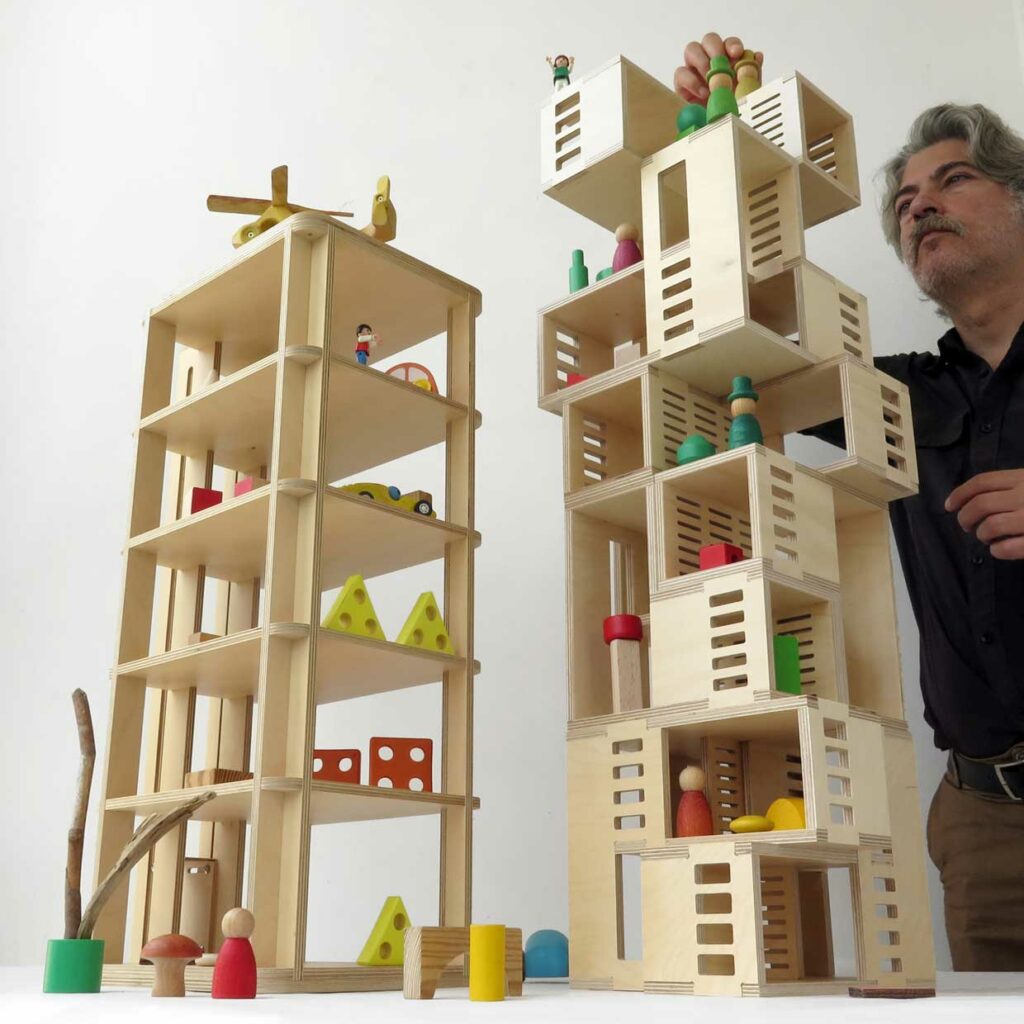Why you design wooden toys for children, Adriana?
I started making these wooden building toys simply because it was a way of doing architecture that allowed me to think and build buildings with my own hands, and without the complexity and difficulty of thinking and building a ‘real’ building. It started, then, being almost a game.

What was your inspiration for your architectual wooden building blocks Olabaa?
The inspiration for making small building blocks comes from the basic and important concepts in the field of architecture. The collection of play buildings wants to be a small reflection on the types of spaces that exist in the urban environment, and at the same time it wants to invite children to understand these spaces, to inhabit them in different ways, to occupy them or modify them through play.

There are many wooden toys that refer to buildings or architectural spaces, but very often they do so from stereotypes that I find very outdated, and I talk about both social, architectural and gender stereotypes.
The isolated single-family house that represents the traditional dollhouse often fosters (or is grounded in) a stereotype of family, domesticity, gender roles, which I feel needs to be overcome. We can still see how domestic spaces, such as kitchens, are focused on girls, and activity spaces such as garages, the fire station, etc. are focused on boys. I’m interested in architecture and how children can play with spaces, think and create with architecture free of these stereotypes.


Why are your architectural building blocks especially suited for children?
The simplicity of the buildings I make turn these structures into toys open to the imagination. These are spaces where the uses that can be given are not defined, only one space is defined, in the case of the skyscraper it is a set of vertical spaces, the hangar is an open space, the museum is a space fruit of a path, and the modules are a system of modular spaces. This lack of significance regarding the use of space makes the play that can be given in these structures free, and it is the creativity of the children that fills and inhabits the buildings. And this not only generates a type of symbolic game, but in other cases a much more abstract game is generated, where the order of certain elements of the game is given in relation to the type of space proposed by each of the buildings.


A few personal questions at the end Adriana: What toys did you play with as a child?
For me, play arose in the relationship with other children, or with natural elements such as sand, earth and water. Building huts, modifying house spaces by changing furniture… I remember that all this was what I liked the most, but never in relation to a specific toy. What I did remember were certain objects that were valuable to me, wooden boxes, notebooks, pens, buttons…
And subsequently: What toy do you think, Adriana is completely superfluous?
If we lived in an environment rich in spaces and elements with which to experiment, such as a natural environment, probably any toy could be superfluous, because children don’t need toys per se if they have elements at their disposal that they can modify, reinvent, and use for their games.
But toys, beyond the play they can provide, are objects, and we often need to love certain objects, for their beauty, or for what they make us feel and experience. I think that superfluous toys are those that have no value as an object, either because of their poor quality in both design and materials, or because they do not convey anything important, especially those that do not allow the freedom to create, since they are meant to convince of something concrete and not to discover, learn or invent new things.

Get in touch with Adriana Salvat via:
